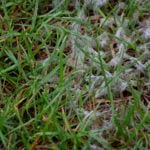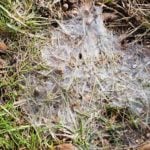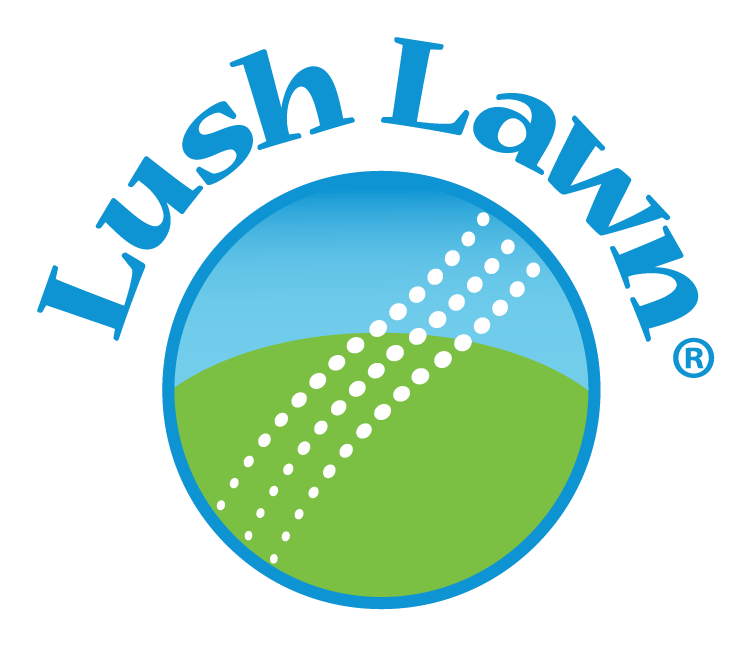Not all lawn diseases flourish in warm weather. Some progress in the dead of winter. Chief among these cold weather catastrophes is snow mold. It’s a fungal infection that grows under the extremely low temperatures in Michigan. But by recognizing the signs and symptoms of snow mold and taking the proper precautions against it, you can keep your lawn healthy throughout the winter and the rest of the year.
What is Snow Mold?
Snow mold refers to two distinct lawn diseases: Gray mold and pink mold, each threatening your lawn in different ways. Here’s how you can tell them apart.
Gray Snow Mold
Gray snow mold attacks the blades of your grass without causing much damage to the underlying roots. Pink mold is more severe. It attacks the entire plant and causes damage that is harder to reverse.  While pink and gray snow mold, for the most part, look the same, they have a key visible difference.
While pink and gray snow mold, for the most part, look the same, they have a key visible difference.
Gray snow mold causes hard growths to develop on the crowns and leaves of the grass it attacks. Snow mold infestations are always a concern, but you should be especially worried if that infestation does not produce any hard growth. Why? It’s a sign that pink mold is developing.
Pink Snow Mold
Sometimes, pink snow mold can look more orange than pink. This is because outside temperatures can cause the mold to develop a red pigment. Looking out for these growths is essential, as pink snow mold is far more damaging than gray snow mold. Both can leave circular brown patches (dollar spots) that are straw-colored. Each will grow larger for as long as the turf remains cool and wet. Inside the patches, the grass will appear matted, and you will notice a colorful fungal growth on top of them.
Both can leave circular brown patches (dollar spots) that are straw-colored. Each will grow larger for as long as the turf remains cool and wet. Inside the patches, the grass will appear matted, and you will notice a colorful fungal growth on top of them.
When Does Snow Mold Occur?
Now that you know about the two types of snow mold that can affect your lawn, let’s talk about when you should look for them to develop. Both gray and pink snow mold will survive the summer as dormant sclerotia. This allows them to resist high temperatures with ease. But when temperatures drop down to winter levels, they go to work and begin to spread across your yard. Snow mold grows in the winter but doesn’t become apparent until the weather warms and the snow melts in early spring. It is most likely to arise if the first snow cover comes early in the year and covers the ground completely. When this happens, you should be especially vigilant about mold. You can reduce its chances of growing by spreading the snow piles out so that it melts more quickly.
How Lush Lawn’s Snow Mold Grass Treatments Work
There is no shortage of lawn diseases in Michigan, and snow mold is one of the biggest culprits. But Lush Lawn’s snow mold grass treatments are tailored to handle any infestation. Here’s the process we use for preventing snow mold:
Raking
For relatively minor snow mold problems, we can usually get rid of the fungus by gently raking the grass in your yard. This eliminates the mold while causing as little damage as possible to the surrounding environment, leaving your turf free to keep growing.
Apply Fungicide
For more severe snow mold problems, Lush Lawn will apply a lawn fungicide to the area. Designed to kill the fungus while causing minimal damage to the rest of your turf, these products are most effective if applied in October and November.
Measure Nitrogen
Besides eliminating current infestations, Lush Lawn can also make a snow mold issue less likely to develop in the first place. We do this by carefully measuring the amount of nitrogen fertilizer we apply, as excessive nitrogen makes mold more likely to grow.
Cut The Grass
Likewise, we can cut the grass throughout the growing season and get rid of any dead blades, leaves, and other plant debris.
Soil Aeration
Finally, we will use a core aerator to loosen the soil beneath the grass blades. This prevents thatch layers from becoming too thick and harboring mold. All of these steps prevent your lawn from becoming a breeding ground for mold infections. It also helps to keep infestations under control if they do happen.
Lush Lawn Services
Our lawn care treatments can handle all common lawn diseases in Michigan. For more information on snow mold prevention and management or to get a free estimate for your yard, contact Lush Lawn today.





